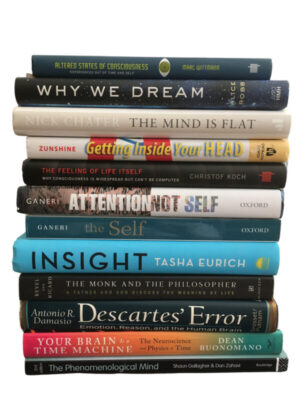July 17, 2013

Storytelling and the Sciences of Mind by David Herman (MIT Press, 2013)
(amazon.co.uk)
Book description from the publisher:
With Storytelling and the Science of Mind, David Herman proposes a cross-fertilization between the study of narrative and research on intelligent behavior. This cross-fertilization goes beyond the simple importing of ideas from the sciences of mind into scholarship on narrative and instead aims for convergence between work in narrative studies and research in the cognitive sciences. The book as a whole centers on two questions: How do people make sense of stories? And: How do people use stories to make sense of the world? Examining narratives from different periods and across multiple media and genres, Herman shows how traditions of narrative research can help shape ways of formulating and addressing questions about intelligent activity, and vice versa.
Using case studies that range from Robert Louis Stevenson’s Dr Jekyll and Mr Hyde to sequences from The Incredible Hulk comics to narratives told in everyday interaction, Herman considers storytelling both as a target for interpretation and as a resource for making sense of experience itself. In doing so, he puts ideas from narrative scholarship into dialogue with such fields as psycholinguistics, philosophy of mind, and cognitive, social, and ecological psychology. After exploring ways in which interpreters of stories can use textual cues to build narrative worlds, or storyworlds, Herman investigates how this process of narrative worldmaking in turn supports efforts to understand — and engage with — the conduct of persons, among other aspects of lived experience.
Comments (0)
- cognitive science,new books
July 16, 2013
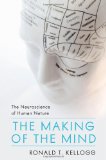
The Making of the Mind: The Neuroscience of Human Nature by Ronald T. Kellogg (Prometheus Books, 2013)
(kindle ed.), (amazon.co.uk)
Book description from the publisher:
Using the findings of recent neuroscience, a psychologist reveals what sets humans apart from all other species, offering a fascinating exploration of our marvelous and sometimes frightening cognitive abilities and potentials.
According to human genome research, there is a remarkable degree of overlap in the DNA of humans and chimpanzees. So what accounts for the rapid development of human culture throughout history and the extraordinary creative and destructive aspects of human behavior that make us so different from our primate cousins?
Kellogg explores in detail five distinctive parts of human cognition. These are the executive functions of working memory; a social intelligence with “mind-reading” abilities; a capacity for symbolic thought and language; an inner voice that interprets conscious experiences by making causal inferences; and a means for mental time travel to past events and imagined futures.
He argues that it is the interaction of these five components that results in our uniquely human mind. This is especially true for three quintessentially human endeavors-morality, spirituality, and literacy, which can be understood only in light of the whole ensemble’s interactive effects. Kellogg recaps the story of the human mind and speculates on its future. How might the Internet, 24/7 television, and smart phones affect the way the mind functions?
Comments (0)
- cognitive science,mind,new books
July 13, 2013
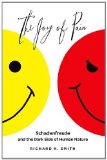
The Joy of Pain: Schadenfreude and the Dark Side of Human Nature by Richard H. Smith (Oxford University Press, USA, 2013)
(kindle ed.), (amazon.co.uk)
Book description from the publisher:
Few people will easily admit to taking pleasure in the misfortunes of others. But who doesn’t enjoy it when an arrogant but untalented contestant is humiliated on American Idol, or when the embarrassing vice of a self-righteous politician is exposed, or even when an envied friend suffers a small setback? The truth is that joy in someone else’s pain-known by the German word schadenfreude–permeates our society.
In The Joy of Pain, psychologist Richard Smith, one of the world’s foremost authorities on envy and shame, sheds much light on a feeling we dare not admit. Smith argues that schadenfreude is a natural human emotion, one worth taking a closer look at, as it reveals much about who we are as human beings. We have a passion for justice. Sometimes, schadenfreude can feel like getting one’s revenge, when the suffering person has previously harmed us. But most of us are also motivated to feel good about ourselves, Smith notes, and look for ways to maintain a positive sense of self. One common way to do this is to compare ourselves to others and find areas where we are better. Similarly, the downfall of others–especially when they have seemed superior to us–can lead to a boost in our self-esteem, a lessening of feelings of inferiority. This is often at the root of schadenfreude. As the author points out, most instances of schadenfreude are harmless, on par with the pleasures of light gossip. Yet we must also be mindful that envy can motivate, without full awareness, the engineering of the misfortune we delight in. And envy-induced aggression can take us into dark territory indeed, as Smith shows as he examines the role of envy and schadenfreude in the Nazi persecution of the Jews.
Filled with engaging examples of schadenfreude, from popular reality shows to the Duke-Kentucky basketball rivalry, The Joy of Pain provides an intriguing glimpse into a hidden corner of the human psyche.
Comments (0)
- new books,psychology
July 10, 2013
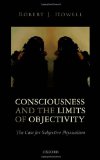
Consciousness and the Limits of Objectivity: The Case for Subjective Physicalism by Robert J. Howell (Oxford University Press, USA, 2013)
(amazon.co.uk)
Book description from the publisher:
In Consciousness and the Limits of Objectivity Robert J. Howell argues that the options in the debates about consciousness and the mind-body problem are more limited than many philosophers have appreciated. Unless one takes a hard-line stance, which either denies the data provided by consciousness or makes a leap of faith about future discoveries, one must admit that no objective picture of our world can be complete. Howell argues, however, that this is consistent with physicalism, contrary to received wisdom. After developing a novel, neo-Cartesian notion of the physical, followed by a careful consideration of the three major anti-materialist arguments–Black’s ‘Presentation Problem’, Jackson’s Knowledge Argument, and Chalmers’ Conceivability Argument–Howell proposes a ‘subjective physicalism’ which gives the data of consciousness their due, while retaining the advantages of a monistic, physical ontology.
Google Books preview:
See also: Author’s website
Comments (0)
- consciousness,new books
July 9, 2013
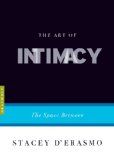
A Publishers Weekly Pick – The Art of Intimacy: The Space Between by Stacey D. Erasmo (Graywolf Press, 2013)
(kindle ed.), (amazon.co.uk)
Book description from the publisher:
The first work of nonfiction by Stacey D’Erasmo, author of the New York Times Notable Books Tea and The Sky Below
“What is the nature of intimacy, of what happens in the space between us? And how do we, as writers, catch or reflect it on the page?” Stacey D’Erasmo’s insightful and illuminating study examines the craft and the contradictions of creating relationships not only between two lovers but also between friends, family members, acquaintances, and enemies in fiction. She argues for a more honest, more complex portrait of the true nature of the connections and missed connections among characters and, fascinatingly, between the writer and the reader. D’Erasmo takes us deep into the structure and grammar of these intimacies as they have been portrayed by such writers as Joan Didion, Toni Morrison, D. H. Lawrence, Virginia Woolf, and William Maxwell, and also by visual artists and filmmakers. She asks whether writing about intimacy is like staring straight into the sun, but it is her own brilliance that dazzles in this piercing and original book.
See also: review in Los Angeles Review of Books
Art of series from Graywolf Press
Comments (1)
- mind,psychology





